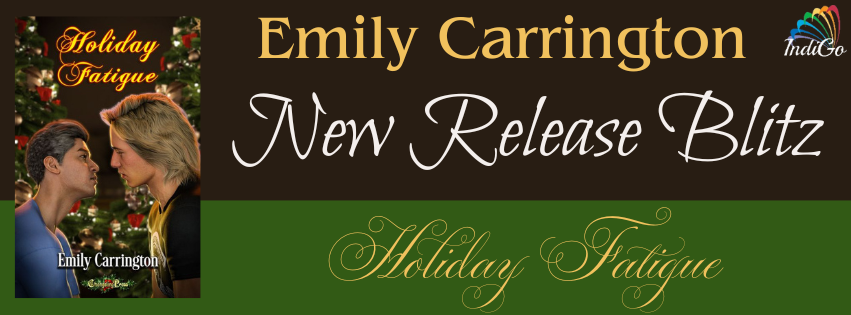Tell us about your latest
book, who is the main character(s) and what can we expect when we pick it up?
Because this book is
nonfiction, there aren’t any characters in the conventional sense. These
essays, however, focus on various aspects of Victorian England that are
mentioned or appear in the original Sherlock Holmes tales. This book (and its
predecessors) are full of interesting tidbits and trivia. For example, Holmes
makes a reference to a monograph he recently completed on “segregation of the
queen bee” in one case. I share about what this means and why it was important
in beekeeping. Want to know more? Go to the next question.
Give us an out of context
quote from your book to warm our hearts:
“Segregating
the queen to only one section, however, caused the rest of the hive to create
more honey than required for the bee population. This separation was accomplished by
putting a screen over the “brood comb” where the queen laid the eggs. The
barrier’s holes were large enough to allow worker bees to pass, but too small
for the larger queen.”
(Not sure how
much it warms your hearts, but it certainly puts some trivia in your head.)
Who
are some authors that you look for inspiration?
This
is a hard one. For mystery/thriller writers, I enjoy Steve Berry, Sue Grafton,
Michael Connelly, and Tess Gerritsen. Agatha Christie also does a great mystery
with a host of suspects. I also discovered S.A. Cosby after hearing him speak
at Bouchercon. I recently completed Razorblade Tears. The only word I have for it is “gripping.” I drove
right past my exit while listening to it one day.
Fire
down below! What’s the first object you save?
This
one’s easy! My computer! It has all my writing in it. (Really should back it
up….)
Advice
for newly sparking writers in three sentences or less:
1)
Finish the manuscript. You can’t edit what’s not written down.
2)
Find a writers’ group. Advice from others can be very insightful.
3)
Keep reading, writing, and studying. Writing is a craft that can be learned and
honed.
Which
of your characters would you want to share a campfire with, and why?
Because
this is nonfiction, I really don’t have any characters for the campfire.
Sherlock Holmes would be a rather entertaining addition to campfire talk if you
could get him started on one of his cases—especially one that was mentioned but
never appeared in any of the volumes. “The Giant Rat of Sumatra” is always
intrigued me. Just how giant was it? What did it do? Did Holmes have to kill
it? And, when was he in Sumatra?
Tell
us about what you are reading at the moment or anticipate reading in the
future? Any new books you are looking forward to?
I’m
about halfway through A Three-Book Problem. Ms. Delaney does a good job of creating a number of
possible suspects who might have reason to murder the victim, and I keep
wavering between them as to whodunnit.
Can
you briefly describe your writing process for us?
When
it comes to fiction, most writers will tell you they are either a “plotter” or
a “pantser.” That is, some writers will develop extensive outlines before they
begin writing. They know exactly where the story is going and how the
characters will move through the plot—from beginning to end. I’ve even read of
some who, given this approach, will be able to identify specific areas that
need to be researched and complete that as well before writing the first draft.
I
admire and envy such writers because I’m a complete pantser—someone who writes
by the seat of her pants. I have no idea where I’m going until I get there,
letting the characters lead me through the journey. I do know the end in a
vague way. A mystery will have a solution. A romance, its happy ending. The
world is saved in a thriller. I tend to write linearly—I start at the beginning
and keep going. When I get stuck, I consider possible plot complications—the
more perilous, the better. This requires me to stop at times to research
something I never knew I needed to know about until then. At this point, I have
to be disciplined to avoid the rabbit hole I mentioned earlier.
In
the end, I have a hot mess (plot holes, too much/too little description, a plot
thread that goes nowhere) that I have to organize into a coherent story—that’s
where outlining and other techniques come in handy. But for me, the unexpected
directions are just part of the joy of writing.
When
it comes to nonfiction, I probably have a somewhat similar approach. Once I
settle on a topic for the essay, I first describe where it appears in the
original Sherlock Holmes mysteries. My next step is to research the subject,
pulling out anything I think is relevant for the essay. Finally, I put this
information in some sort of order. A few more revisions occur before the essay
is to the point I think it is publishable.
What
is next on your writerly horizon?
I
am currently working on a new series set in turn-of-the-century San Francisco.
It’s going slowly because I’m still feeling out the characters. Once a draft is
done, I’ll start on the fifth book in my “Early Case Files of Sherlock Holmes”
series. I have an idea in the back of my mind, but not ready to share it until
it solidifies more.
Each
month, I also prepare an essay (like the ones just published) for Sherlockian
society newsletters. The last one was on hats. (Did you know men used to wear
their hats in the office because it was considered a “public” place?)
Please
share your links for readers to check out your books, social medias, etc. as
well.
Website:
www.liesesherwoodfabre.com
Facebook:
https://www.facebook.com/liese.sherwoodfabre
Twitter:
https://twitter.com/lsfabre
Amazon
Author Page: https://www.amazon.com/Liese-Sherwood-Fabre/e/B00810INE6
Goodreads:
https://www.goodreads.com/author/show/5758587.Liese_Sherwood_Fabre
If you follow me on Bookbub and email me
(liese@liesesherwoodfabre.com), I’ll send you a FREE Sherlock Holmes short
story duet.
Bookbub link: https://www.bookbub.com/authors/liese-sherwood-fabre
The Life and Times of Sherlock Holmes, Volume 4
by Liese A Sherwood-Fabre
GENRE: Non-Fiction
BLURB:
Be as smart as Sherlock Holmes!
Arthur
Conan Doyle's original tales include many references to everyday Victorian life
that are no longer part of current readers’ world. What Holmes would have eaten
from a can while searching for the hound of the Baskervilles, Watson's
enjoyment of a yellow-back novel, or the proper use of a gasogene would have
been common knowledge to the Victorian contemporary but compels modern readers
to run to the nearest reference book. These twenty-five short essays pull such
items from the past and expand on their significance in the story. As an
additional bonus, this book contains an essay on the role of scandal in Holmes;
cases, originally appearing in a collected volume of essays on feminism and
agency. After enjoying these concise treatises on Holmes’ world, readers will
have a deeper understanding and appreciation of both the times and the life of
the world’s greatest consulting detective.
Amazon: https://www.amazon.com/Life-Times-Sherlock-Holmes-Enlightening-ebook/dp/B0BJ7P1BH8
BN:
https://www.barnesandnoble.com/w/the-life-and-times-of-sherlock-holmes-liese-sherwood-fabre/1142375056?ean=2940185567104
Kobo:
https://www.kobo.com/us/en/ebook/the-life-and-times-of-sherlock-holmes-6
iBook: http://books.apple.com/us/book/id6443588533
Other: books2read.com/u/bOnezW
Excerpt
Two:
Transgressions: Scandal in the Canon
The threat of scandal appears in almost a quarter of the
tales in the Canon. In four of these cases, clients seek Holmes’ assistance to
avoid exposure of a Victorian norm violation: three involve letters to previous
lovers; the fourth, an attempted theft of an item entrusted to a banker. In the
other ten, as Holmes solves the mystery, he uncovers evidence that, if
revealed, would cause a scandal for someone entangled in the case. In many of
these tales, the mere threat of such publicity is enough to force them to do
another’s bidding (such as paying blackmail or changing a will). That
committing murder is considered a better solution than suffering the negative
public reaction to such revelations indicates the power certain Victorian
social norms carried (and still do) within certain social strata.
While many behaviors may be unacceptable (stealing, for
example), not all are scandalous, and even disreputable behavior can be
tolerated under certain circumstances. Ari Adut in On Scandal: Moral
Disturbances in Society, Politics, and Art defines the public experience of
scandal as “an event of varying duration that starts with the publicization of
a real, apparent, or alleged transgression to a negatively oriented audience .
. .” Three basic elements must exist to form a scandal: the transgression,
someone to publicize the offense, and a public who cares or is interested in
the offense.
The danger of scandal played an important role in
maintaining proper Victorian social conduct, and in several of Holmes’ cases,
was suffcient to force some to break the law themselves—including murder.
Understanding what makes a scandal and why avoiding such exposure in Victorian
times provides greater depth and understanding of the motivation behind the
crimes Sherlock is called in to solve or prevent.
~~~~~~~~~~~~~
a Rafflecopter giveaway
AUTHOR Bio and Links:
Liese
Sherwood-Fabre knew she was destined to write when she got an A+ in the
second grade for her story about Dick, Jane, and Sally’s ruined picnic. After
obtaining her PhD, she joined the federal government and worked and lived
abroad for more than fifteen years. Returning to the states, she seriously
pursued her writing career, garnering such awards as a finalist in RWA’s Golden
Heart contest and a Pushcart Prize nomination. A recognized Sherlockian
scholar, her essays have appeared in scion newsletters, the Baker Street Journal, and Canadian Holmes. These have been
gathered into The Life and Times of
Sherlock Holmes essay collection series. She has recently turned this
passion into an origin story series on Sherlock Holmes. The Adventure of the Murdered Midwife, the
first book in The Early Case Files of Sherlock Holmes series,
was the CIBA Mystery and Mayhem 2020 winner.
Writer links:
Website: www.liesesherwoodfabre.com
Facebook:
https://www.facebook.com/liese.sherwoodfabre
Twitter:
https://twitter.com/lsfabre
Amazon Author Page:
https://www.amazon.com/Liese-Sherwood-Fabre/e/B00810INE6
Goodreads:
https://www.goodreads.com/author/show/5758587.Liese_Sherwood_Fabre







6 comments:
Good morning!
Thanks for hosting me!
The book sounds like an interesting read.
Hi, Sherry!
Thanks and happy holidays!
Thank you for sharing! I adore Sherlock Holmes!
Hi, Caryl!
I'm sort of fond of Sherlock myself! :-)
Have a great weekend!
Excellent interview!! I really enjoyed reading it and learning more about this book and the author!!
Post a Comment